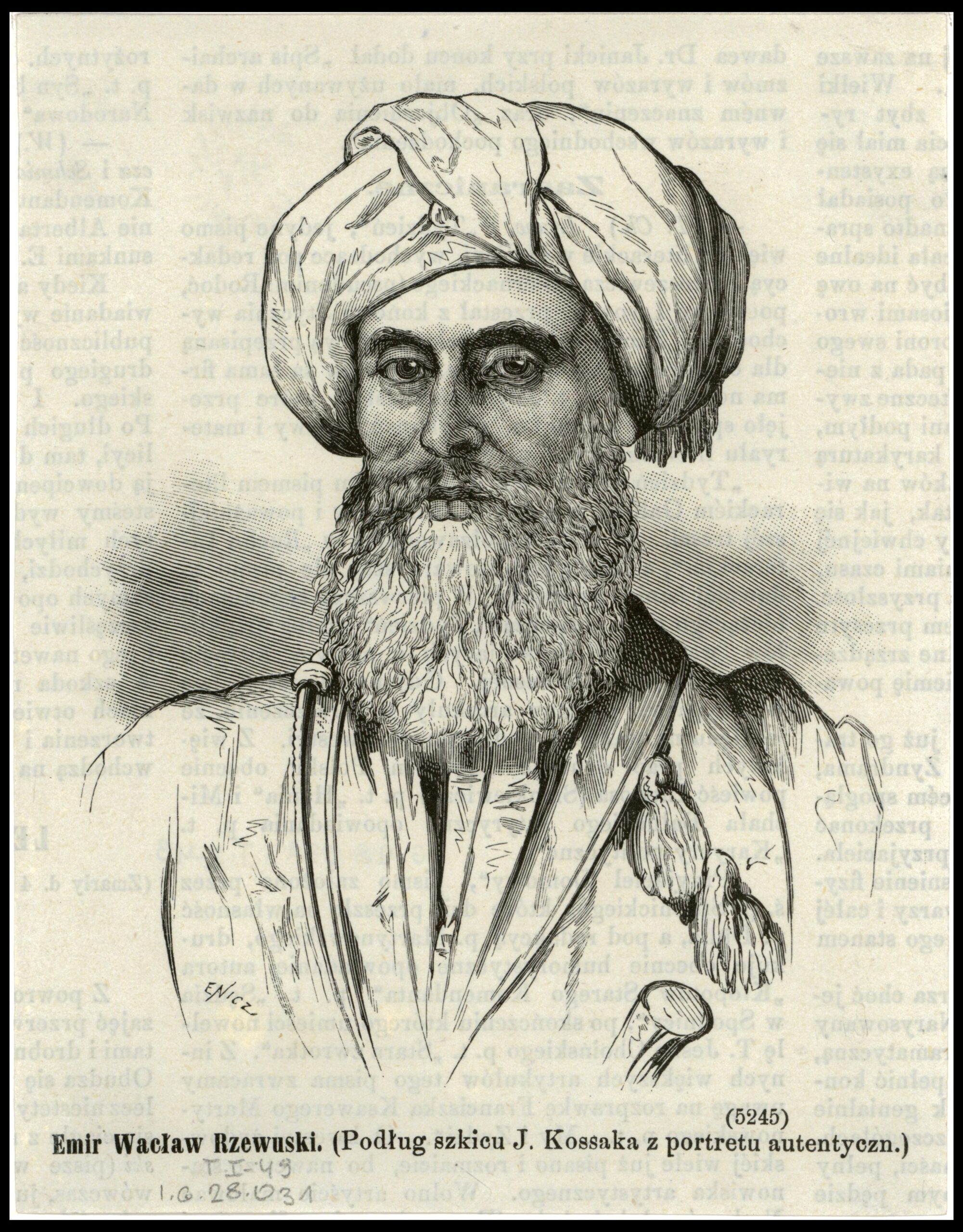History & Heritage
9.11.2023
The Polish aristocrat who became an Arab sheikh

Motivated by his passion for collecting and documenting Arabian horses, Wacław Seweryn Rzewuski left his former life among the Polish nobility to spend years in the deserts of the Arabian Peninsula, where he assimilated into the customs of the local tribes and acquired the title of emir.
Born in the purple
Born in Lviv on December 15, 1784, Wacław Seweryn Rzewuski came from a family of Polish magnates. His father, Seweryn Rzewuski, played a controversial role in Polish history as co-founder of the Targowice Confederation, while his mother, Konstancja Lubomirska, passed on an aristocratic lineage to the family.
At the age of ten, Rzewuski began his schooling at the Theresianum military academy in Vienna, Austria. It was here that he honed his intellectual prowess, and marked the beginning of a life profoundly influenced by his innate curiosity.
Rzewuski’s military career began with distinction. He graduated from the Austrian military academy with honors and took part in the Battle of Aspern in 1809, earning promotion to captain of rotation in the 2nd Lancers. In 1811, however, he chose to resign from the Austrian army, paving the way for a remarkable transformation.
Voir cette publication sur Instagram
The calling of the Orient
Leaving the army behind, Rzewuski found his calling in the Orient. He settled in Savran, Podolia, where he set up a breeding farm for Arabian horses. This was the beginning of his deep fascination with the Arabian Peninsula and its rich culture.
In 1817, Rzewuski embarked on a journey to the Middle East, crossing the Balkans to Istanbul and venturing into the Nadj desert. His aim was to buy pure-bred Arabian horses, an undertaking that required living among the Bedouin tribes, who granted him the title of emir.
In January 1818, Count Rzewuski took up residence in Damascus and began expeditions into the Syrian desert. His journey took him further south, to Jabal Druz and the road from Wadi Sirhan to al-Jawf, in modern-day Saudi Arabia. After just five months, his treasure was exhausted. Undeterred, he exceeded the Queen’s expectations by returning to Istanbul with not only eight exceptional stallions and twelve mares, but also the renewed financial support of a banker. The following year, he returned to Damascus.
Over the next two years, his thirst for adventure took him deeper into the heart of Arabia, including a pilgrimage along the sacred route to the city of Mecca. His remarkable equestrian skills and deep knowledge of horses earned him the admiration of the Bedouin tribes, who conferred on him the title of Amir Taj al-Fahar ‘Abd al-Nishaani, which translates as “crown of fame”, like his Polish name, Waclaw. During this period, he amassed an impressive collection of 81 stallions and 33 mares from the deserts of Najd.
A lasting legacy
Rzewuski’s return from his two-year odyssey in 1820 marked a profound metamorphosis. Assimilating the customs of nomadic tribes there, he was affectionately nicknamed Goldenbeard among them. His tales of adventure and personal transformation were a source of inspiration for romantic poets and artists. In addition to his adventures, Rzewuski left a considerable literary legacy. His magnum opus, “On oriental horses and horses of oriental breeds”, which remained in manuscript for many years, describes and analyzes Arabian horses, as he diligently procured them and passed them on to Tsar Alexander I of Russia.
Voir cette publication sur Instagram
This treatise, part diary and part autobiography, also describes his travels in the Middle East, the people he met, the Bedouin tribes, and his profound knowledge of Arabian horses, illustrated with intricate vignettes and depictions of Arabian life. Although a Polish translation of the fragments was published in 1866, it was not until the 21st century that Rzewuski’s masterpiece was the subject of a complete scientific edition, funded by the Qatar Museums Authority. This initiative has made Rzewuski’s work known throughout the world, consolidating his status as an outstanding Orientalist.
popular

